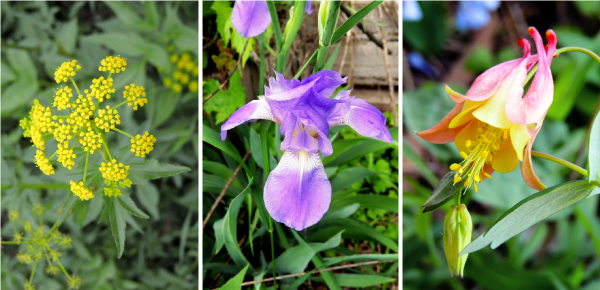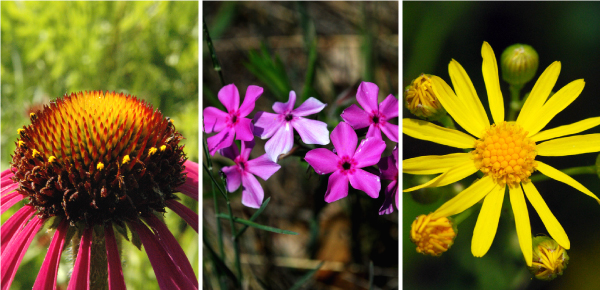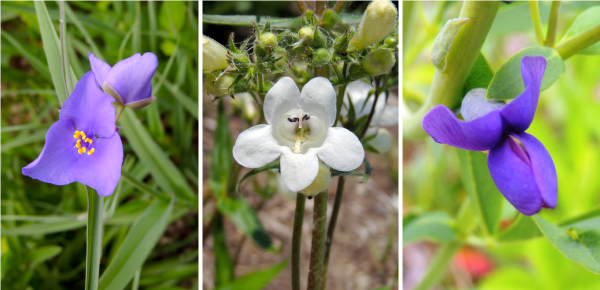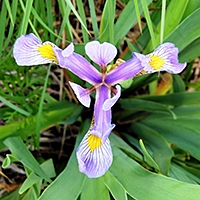The Prairie at Menomonee Valley is Full of Flowers!
by Lainet Garcia-RiveraThese flowers will last just a month, since the blooming period is late spring to early summer. Hurry up to see the:
Blue Flag Iris (Iris virginica shrevei): This flower is an important food source for many insects. It prefers wet to moist conditions, partial to full sun, and a rich organic soil.
Golden Alexander (Zizia aurea): This golden member of the carrot family that can be found in areas in a wide variety of habitats and soil types.
Wild Columbine (Aquilegia canadensis): Drooping bells with long, curved spurs give this flower a distinct beauty. It can survive in a variety of soil types but thrives in light-to-medium soil with good drainage.
Come join our Flora Fridays at Menomonee Valley to learn about the importance of native plants!

from left to right: golden alexander, blue flag iris, wild columbine
Flaming ragged Hedgehogs at Washington Park?
by Tim VargoEntomology is the study of insects. Etymology is the study of the history of words. A wildflower hike through Washington Park in June shows connections between these “ologies”.
Pale Purple Coneflower (Echinacea pallida): Echinacea means hedgehog (the middle of the flower is spiny) and the flower provides important food for butterflies.
Prairie Phlox (Phlox pilosa): Phlox means flame and this plant provides important food for bees.
Balsam Ragwort (Packer paupercula): Ragwort means ragged plant, but this flower is quite showy and provides important food for beetles.
Want to learn more? Please consider volunteering with the Washington Park Land Stewardship Team.

from left to right: pale purple coneflower, prairie phlox, balsam ragwort
A Spiderwort by Any Other Name
by Matt FlowerNow that the temperatures are going up and the photoperiod has lengthened, a whole new host of flowers are ready for your enjoyment! These examples have a distinct appearance related to their interesting names!
Spiderwort (Tradescantia ohiensis): One explanation for its common name comes from the sap that emerges when the stalk or leaf is torn. The sap forms filaments that resemble a spider's web.
Foxglove Beardtongue (Penstemon digitalis): Its interesting common name is derived from the fifth stamen that is tipped with hairs that resemble a beard. The flower is a true delight compared to the unpleasant odor the flower releases when it goes to seed. Yuck!
Blue Wild Indigo (Penstemon digitalis): A velvety soft perennial which derived its common name from being use as a clothing dye. In the fall the seed pods make a fun impromptu rattle for some trail side music.
Join our Foresty Fridays at Riverside Park for more flower fun!

from left to right: spiderwort, foxglove beardtongue, blue wild indigo
Summary
So get outside this summer, and when some red, orange, or purple petals catch your eye, remember that there’s more to flowers – from their funny names to the food they provide to the dirt in which they grow – than just a pretty face.





